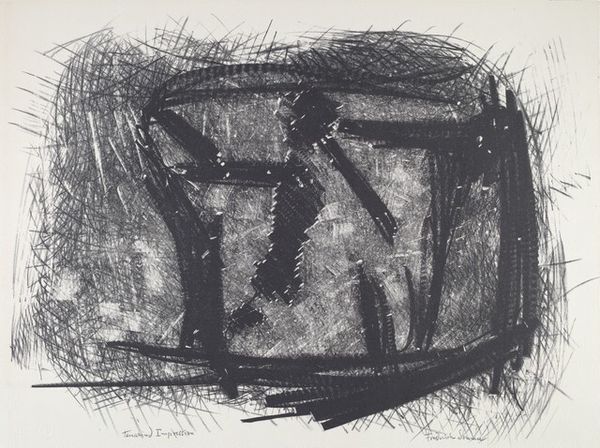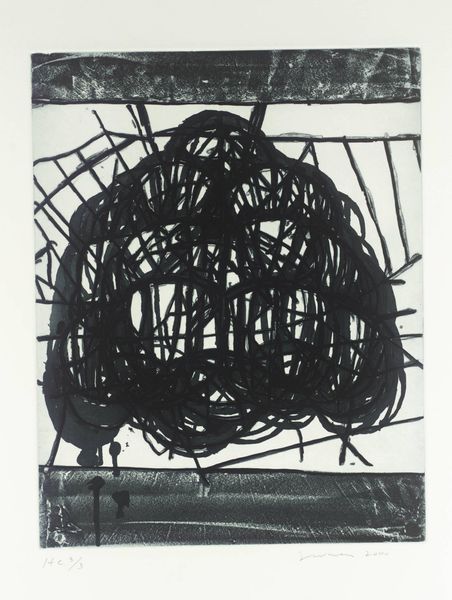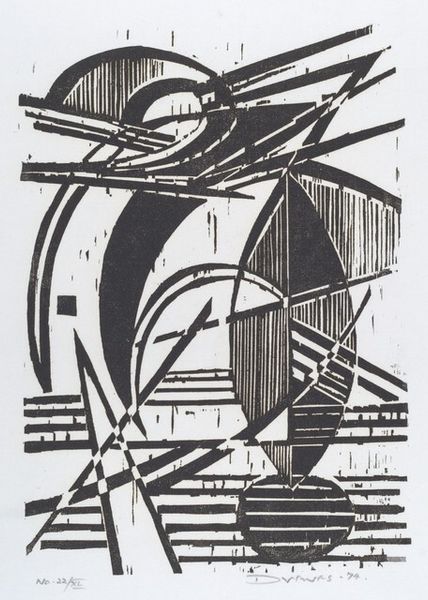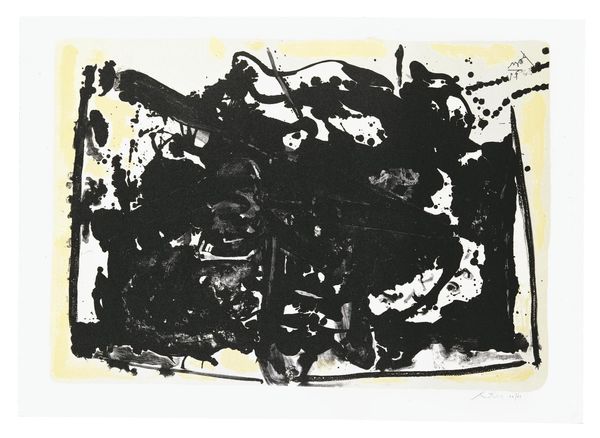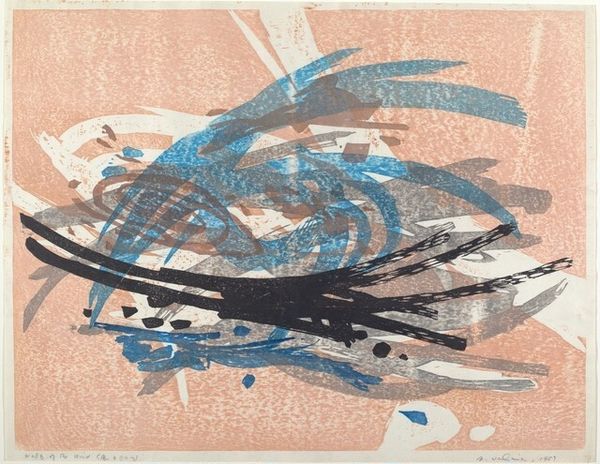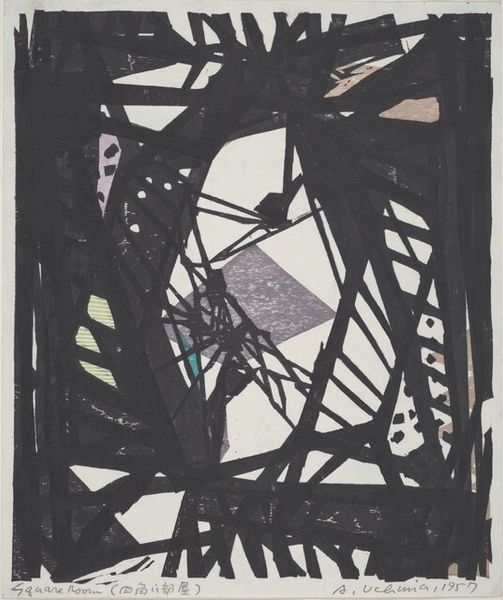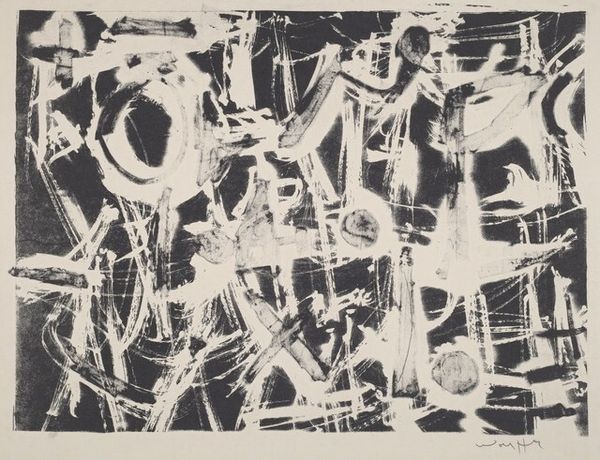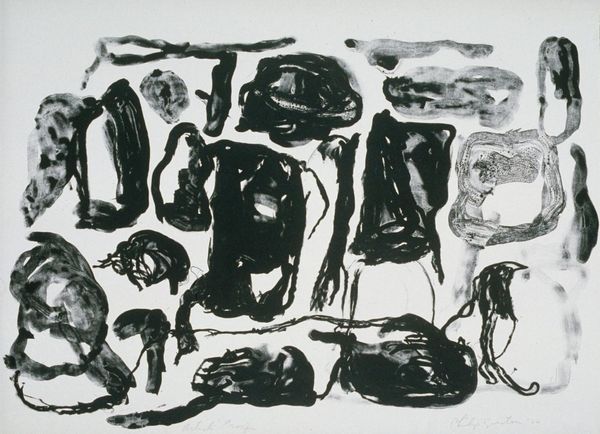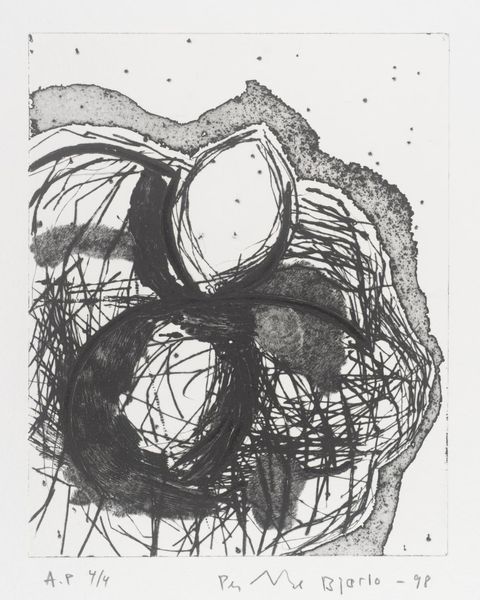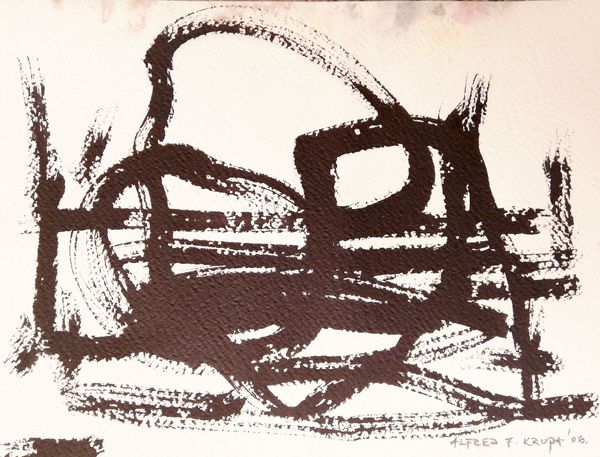
print, woodblock-print
# print
#
form
#
woodblock-print
#
geometric
#
abstraction
#
modernism
Copyright: National Gallery of Art: CC0 1.0
Editor: This is "Xylophone," a 1957 woodblock print by Ansei Uchima. I'm immediately struck by how much movement is packed into what appears to be a rather abstract piece. What sense do you make of it? Curator: Well, Uchima's embrace of modernism during the post-war period in Japan is interesting. Consider the Gutai group, also emerging then, and their emphasis on action and materiality. Uchima, though working with the more traditional medium of woodblock print, seems to channel that spirit. How do you think his choice of title, "Xylophone," influences our understanding? Editor: It almost suggests that the shapes could be the individual keys of a xylophone. Perhaps it’s a visualization of music, a symphony of shapes and lines? Curator: Exactly. Think about how Japan was re-constructing its identity on the world stage after the war, balancing tradition and modernity. The work uses geometric shapes, reflecting perhaps the influence of European abstraction, yet executed in a distinctly Japanese technique. Do you see any tension in this combination? Editor: Definitely. There's a push and pull. I guess, the title makes me want to "hear" the sounds visually, and to associate specific forms and arrangements with particular social contexts where one can listen to the sounds, therefore, makes it deeply ingrained in memory. Curator: Yes. The layering, the density, perhaps this echoes the complexity of Japanese society grappling with these forces. And what about the role of galleries and museums in shaping the appreciation of such cross-cultural artworks at the time? Editor: That’s a really great point! The museum provided legitimacy for abstract forms and pushed audiences to engage in international and modern vocabularies of visual representation. It provides context for the artwork that encourages open readings and critical interpretation, Curator: It really demonstrates how artistic production, even within a seemingly isolated medium like woodblock printing, always exists within a complex web of historical, social, and institutional forces. Editor: This really opened my eyes to a whole new way of considering the historical circumstances of the artwork. Thank you!
Comments
No comments
Be the first to comment and join the conversation on the ultimate creative platform.

